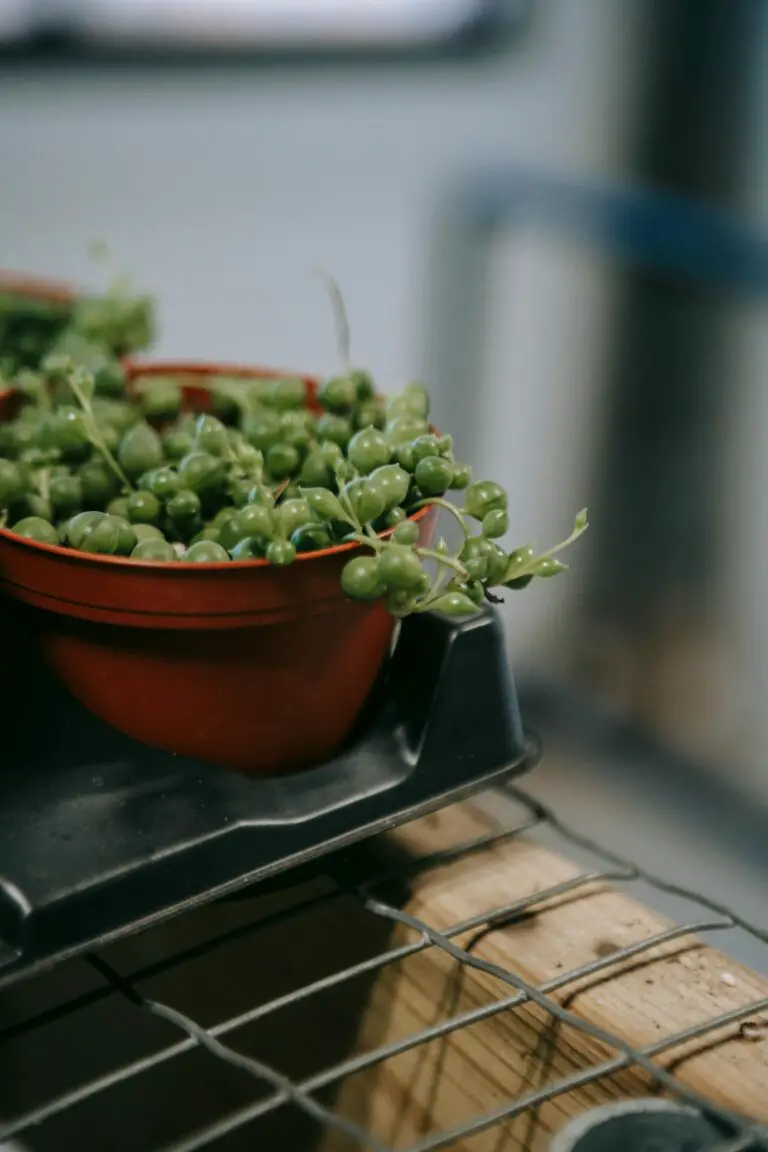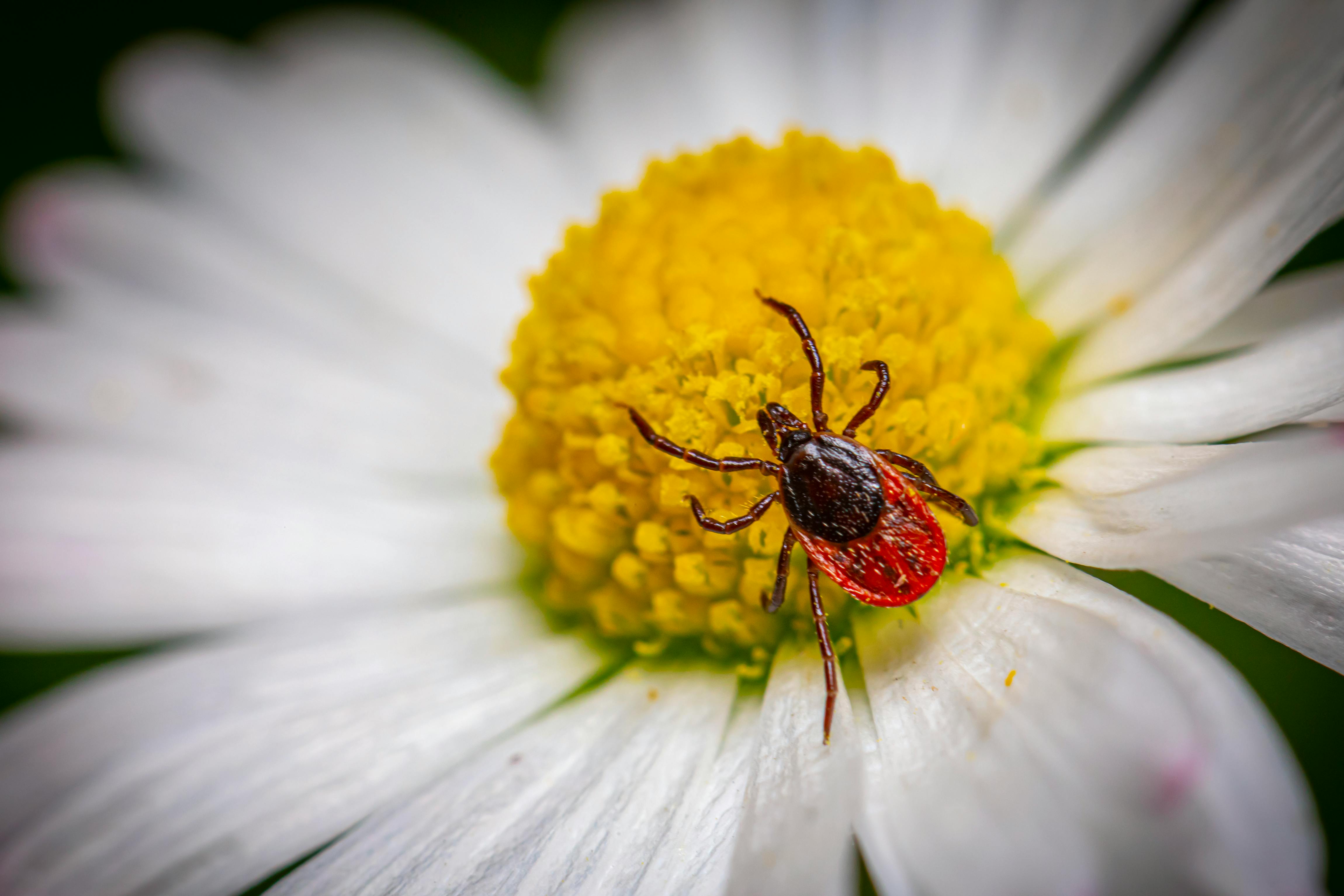Discovering Senecio Peregrinus: Introduction to the Dolphin Succulent
Tucked away in the nooks and crannies of nature’s grand display, the Senecio peregrinus, affectionately known as the ‘Dolphin Plant,’ quietly swims into the limelight. This charming succulent is native to the arid landscapes of South Africa, but it has since sailed across the seas, captivating the hearts of houseplant enthusiasts far and wide. The name ‘Dolphin Plant’ stems from the extraordinary shape of its leaves, which, with a dash of imagination, resemble a pod of leaping dolphins.
It’s not just the whimsical leaf structure that fans adore; its adaptability as an indoor plant has granted it celebrity status among its green-thumbed admirers. Unlike some high-maintenance houseplants, the care for Senecio peregrinus is more akin to a gentle sea breeze—refreshing and straightforward. Seeking the keys to dolphin plant care is a voyage worth embarking on, and expert guidance is just a click away.
Adding to its appeal, this succulent’s versatility effortlessly blends into various indoor landscapes. Be it hanging baskets, where its leafy tendrils cascade like ocean waves, or perched upon shelves, where its playful foliage can truly shine. When strolling through the gardens of houseplant collections, one quickly discerns why Senecio peregrinus has surfaced as a must-have botanical treasure.
As we dive deeper into the world of the dolphin plant, let’s immerse ourselves in a visual exploration. Behold, a snippet showcasing the delight it brings to any indoor oceanic ambiance:
Feel the aquatic allure as each leaf ebbs and flows, crafting a seascape within your living quarters. The Senecio peregrinus beckons us to foster our own underwater haven, a serene aquatic escape amidst the clamor of our daily lives.
Decoding the Perfect Environment: Ideal Growing Conditions for Your Dolphin Plant
Like witnessing pods of dolphins leaping through the ocean, growing Senecio peregrinus, commonly known as the Dolphin Plant, at home brings a similar splash of joy. To keep these playful-looking plants flourishing, creating an environment that mimics their natural habitat is crucial. So, let’s dive into the conditions that make Senecio peregrinus do backflips with happiness!
Sunlight: Riding the Waves of Bright Indirect Light
Imagine our little dolphins basking in the dappled sunlight of a coastal cliffside. That’s precisely the type of sunlight your Dolphin Plant craves. Aim for around 6 hours of bright but indirect light daily. East or west-facing windows are perfect surf spots for them to catch those rays without getting sunburned. If you notice your plant stretching out or losing its distinctive dolphin shape, it might be telling you it’s time to move closer to the light—a real-life game of plants’ hot and cold!
Temperature: Warm Waters for Optimal Growth
The Dolphin Plant isn’t one to enjoy the chill of deep waters. In fact, it prefers consistent temperatures between 65-75°F (18-24°C). Avoid sudden temperature changes, as they can cause your plant to go into shock like a dolphin caught in a cold current. Keep them away from drafts, air conditioning units, and heat sources that could disrupt their comfortable swim in the sea of your home.

Humidity: Maintaining the Oceanic Ambiance
In their native environment, Senecio peregrinus plants are accustomed to a certain level of humidity that whispers of ocean spray. Achieving a 40-50% humidity level in your home will make these succulents feel like they’re frolicking in seaside air. It’s not necessary to create a tropical storm; just a simple pebble tray or occasional misting can create a microclimate that keeps their succulent leaves plump and hydrated. Monitor moisture levels as you would the tides, ensuring that your plant’s environment stays consistent and comfortable.
Now that you’re equipped with the knowledge of what sets the stage for a thriving Senecio peregrinus, it’s time to emulate these conditions and watch your Dolphin Plant perform its graceful leaps and bounds in the comfort of your living room. With the right balance of sunlight, temperature, and humidity, you’ll have a front-row seat to the aquatic ballet of this delightful succulent.
The Secrets of Soil and Watering: How to Keep Your Dolphin Plant Healthy
Unlocking the serenity of a thriving Senecio peregrinus, commonly known as the Dolphin Plant, begins beneath the surface: soil composition and drainage. Envision the natural habitat of this picturesque succulent—it’s not about lush, moisture-retentive earth, but rather a gritty, sandy foundation that emulates a rocky cliffside rendezvous.
What does this mean for you, the passionate plant parent? Precision in your potting mix is key. Aim for a soil blend that boasts a well-draining personality, one that evokes the essence of a desert terrain. Imagine combining coarse sand with perlite or volcanic pumice, ensuring each grain creates ample space for water to escape, whispering farewell to root rot.

When it’s time to water, think of desert downpours—infrequent but thorough. Your Dolphin Plant craves a drenching down to its deepest roots, followed by a period of drought where it can contemplate life (and photosynthesis) in peace. Employ the ‘soak and dry’ method, where the soil’s surface appears parched before the next watering, teasing the roots with anticipation. Measure the moisture level with a simple touch, or if you prefer a tech-led approach, a hygrometer can serve as your guide.
An anecdote of admonition: Avoid the tragedy of a loving overwater. Enthusiastic caregivers often fall prey to affectionate drownings. There’s a delicate line between hydrating and creating a succulent swimming pool; one leads to lush growth, the other to mushy decline. To succeed, water when the top inch of the soil feels like forgotten dreams of the Sahara—dry and awaiting the promise of rain.
Consult our guide to succulent soil for deeper insights. Let it shepherd you through selecting the ideal soil mix, ensuring your Senecio peregrinus can plunge its roots into a mixture that feels like home.
Mastering the balance of soil and water is both an art and a science, laying the verdant groundwork for the Dolphin Plant’s enchanting undersea dance. Keep this equilibrium, and watch as your Senecio peregrinus tells tales of nautical escapades through its flourishing foliage.
Propagating Your Senecio Peregrinus: A Step-by-Step Guide
Are you ready to dive into the world of propagating your very own Senecio peregrinus, also known lovingly as the Dolphin Plant? By the end of this hands-on guide, you’ll feel like a seasoned gardener with green fins—ready to expand your underwater-like garden. So grab your gardening gloves; it’s time to propagate!
Step 1: Making the Cut
First, select a healthy stem from your parent Dolphin Plant with robust dolphin-shaped leaves. Look for a stem that’s about 4-6 inches long with multiple leaf nodes—these little bumps are where your new roots will emerge. Use clean, sharp scissors to take a cutting. The key is a clean cut; you don’t want to harm your charming finned friends!

Step 2: Prepping for Success
Once you’ve made your cutting, give it a day to callous over. This step is crucial; it helps prevent rot and disease from creeping in once you plant your cutting. Think of it like a scab after a scrape—nature’s way of protecting against invaders.
Step 3: Rooting Around
Now for the magic of rooting! Dip the calloused end of your cutting in rooting hormone to speed up the process and encourage strong root growth. Then, nestle your cutting into a moist, well-draining soil blend. A mix of peat, perlite, and sand works wonders for these aquatic-themed beauties.
For a thorough understanding of the perfect environment for your growing Dolphin Plant, this care guide dishes out all the details you need to keep your plant thriving. Remember, care extends beyond just planting—understanding your Dolphin Plant’s needs will ensure a better propagation outcome.
Step 4: Settling In
After planting your cutting, place it in a spot with bright, indirect light and be patient. Over-watering is the nemesis of succulent propagation, so resist the urge to drench your new plant baby. Wait until the top inch of soil is dry to the touch before watering again. Within a few weeks, you’ll notice tiny roots forming, a sure sign your propagation is on the right track!
Step 5: Transplanting to the Big Blue
Once your cutting has established roots and new growth, it’s time to transplant it to its permanent pot. A container with good drainage is crucial for avoiding soggy soil, a known villain for succulents. Gently place your baby Dolphin Plant into its new home, backfilling with soil and watering it in to settle it into its new aquatic world.
And there you have it—a step-by-step guide to propagating your very own Senecio peregrinus. With a little patience and care, you can create a cascade of leaping dolphins, bringing a unique and whimsical charm to your space. Bon voyage on your propagation journey!
Troubleshooting Common Issues: Pests and Diseases
Ever noticed your Senecio peregrinus looking a bit under the weather? Those playful dolphin-shaped leaves might fall prey to a few troublemakers. Let’s dive into the sea of knowledge and tackle the invaders of our beloved Dolphin Plant.
First off, why are your leafy sea creatures looking less than stellar? Could be aphids, mealybugs, or spider mites—these pests love to hitch a ride on your indoor oceanic wonder. You might spot them as tiny uninvited guests, throwing a party at the expense of your plant’s sap.
Here’s a real-life scenario: Imagine you’ve diligently watered and cared for your dolphin pod, only to find sticky leaves or fine webs, like an underwater scene gone wrong. That’s a red flag! These are the calling cards of sap-sucking pests, ready to drain the life out of your succulent sailors.

Now, let’s chat strategy—how do you send these pests packing? Get your hands on some insecticidal soap or neem oil, both safe for indoor use and pretty effective in showing those critters the door. Spray them down like a pest-policing superhero. Just be sure to test on a small area first, because even Dolphin Plants have their likes and dislikes.
But wait, there’s more—fungal foes. If you see your plant donning spots or looking like it’s been dusted with flour, you might be dealing with powdery mildew or leaf spot fungi. They’re like the moldy patches on the hull of a ship, and they love to flourish in the nooks and crannies of congested foliage.
Treating these unwanted stowaways might involve a bit of pruning—a gentle trim to increase airflow or a snip here and there to remove infected parts. Also, consider incorporating a fungicide into your plant-care arsenal, but always read the label and follow a guide to succulent care for the best practices!
Prevention is the best defense. Be vigilant with monitoring, isolate new plants to prevent the spread of any shipboard mutinies, and remember that proper care is your best ally in keeping your Senecio peregrinus shipshape. With these tips, your Dolphin Plant will surf the waves of health, making pests and diseases walk the plank!
Styling With Senecio Peregrinus: Creative Ideas for Display
When it comes to giving your space a splash of nature’s beauty, nothing does it quite like the charming Senecio Peregrinus, commonly known as the Dolphin Plant. With its unique dolphin-shaped leaves, this succulent has swum its way into the hearts of plant enthusiasts worldwide. Let’s dive into some stylish and artistic ways to showcase this delightful plant in your environment.
Creating a Marine-Inspired Hanging Garden
Imagine entering a room where dozens of tiny green dolphins seem to be leaping through the air. Hanging baskets are the perfect vessels to turn this fantasy into reality. Suspend them near a window where filtered sunlight can mimic the dappled surface of the sea, providing your Dolphin Plant with the perfect backdrop. Grouping several baskets at varying heights creates a dynamic display that’s bound to draw every visitor’s gaze.

Part of the Succulent Symphony
No succulent collection is complete without the melodious beauty of the Senecio Peregrinus. When positioned alongside other succulents, the distinctive shapes of the Dolphin Plant’s leaves offer a delightful contrast that enhances the collection’s visual appeal. Set against the rosettes of Echeverias or the spiky allure of Aloes, Senecio Peregrinus plays its part in a symphony of textures and forms that’s visually harmonious and relaxing.
Tabletop Terrariums: A World Within Glass
Glass terrariums aren’t just for fairies and moss. Turn a tabletop into an aquatic scene by creating a terrarium with sand-reminiscent substrate, a few rocks for the landscape, and a Senecio Peregrinus taking center stage. This micro-habitat can become a conversational piece that captures the imagination and brings the rhythm of the ocean into your home or office. Plus, the clear enclosure allows for an unobstructed view from all angles, making it an engaging showcase for your dolphin-esque delight.
Whether hanging in mid-air, complementing a succulent collage, or encased in a glass world, the Senecio Peregrinus offers endless opportunities to get creative with your greenery. Not only does it add life to your space, but it also encourages moments of joy for anyone lucky enough to witness these playful plants “swimming” through your decor. So go ahead, let your imagination play with the tide, and style your space with the captivating Senecio Peregrinus.
Frequently Asked Questions about Senecio Peregrinus
When it comes to the charming yet quirky Senecio Peregrinus, commonly known as the Dolphin plant, plant enthusiasts often dive into a sea of questions to ensure their ocean-inspired succulent thrives. Let’s navigate through the common curiosities that surround the care of these delightful dolphin-like creatures of the plant kingdom.
Caring for Your Dolphin Plant Through the Seasons
Just like dolphins gracefully adapt to different waters, the Senecio Peregrinus exhibits resilience across seasons. However, providing optimal care as the seasons change contributes to a healthy and happy plant. In spring and summer, your dolphin plant is in its active growing phase; ensure it bathes in bright, indirect sunlight and drink up when the soil feels dry. When winter rolls in, reduce watering to prevent root rot, as your plant cozies up in a state of dormancy.
Growth: How Fast Can Your Dolphins Swim?
Curious about how quickly these succulents sprint? With proper care, Senecio Peregrinus can grow at a moderate pace, often making it a delightful surprise to witness their development. In the right conditions—ample light, well-draining soil, and minimal water—these “dolphins” may leap with growth, cascading elegantly in their unique aquatic dance.
Watching these dolphins soar can be as captivating as observing their real-life marine counterparts, and fortunately, we’ve got just the visual aid to help you along this journey. Check out this insightful video for a deep dive into the care of your own string of dolphins!
Is Senecio Peregrinus Safe for My Furry Friends?
When it comes to pet safety, this is where the Senecio Peregrinus truly shines. Unlike some other household plants, the dolphin plant is non-toxic to cats and dogs, giving you one less thing to fret over in your home’s mini-ecosystem. Of course, it’s still best to keep these delicate tendrils out of paw’s reach—after all, we wouldn’t want these delicate “sea creatures” to end up beached on the carpet!
Addressing these FAQs should help guide both seasoned plant parents and budding green thumbs alike. Tending to a Senecio Peregrinus isn’t just about plant care; it’s about creating an enchanting underwater illusion that thrives on your own dry land. Raise the sails and set forth on a nautical adventure with your dolphin plant as your loyal companion.



